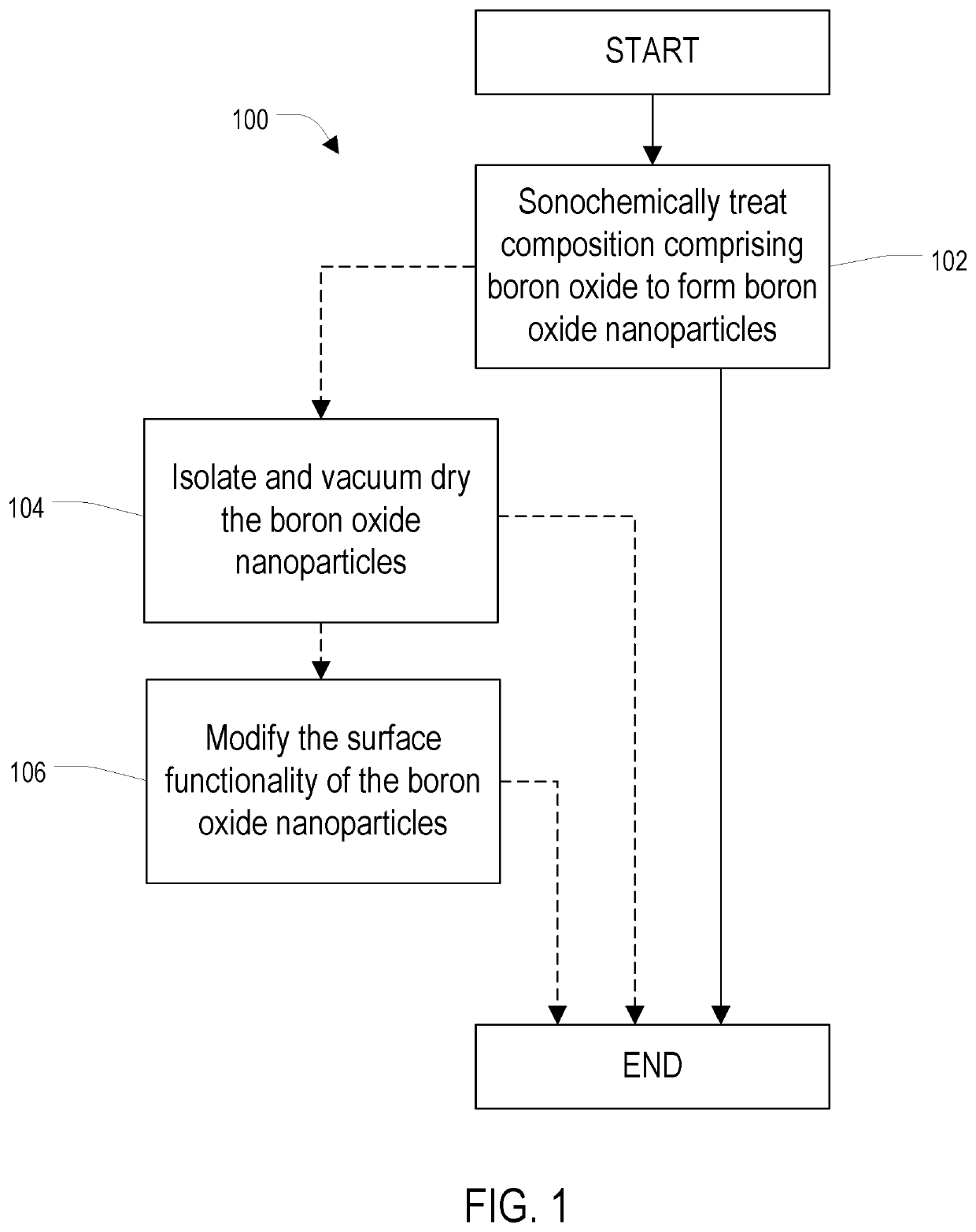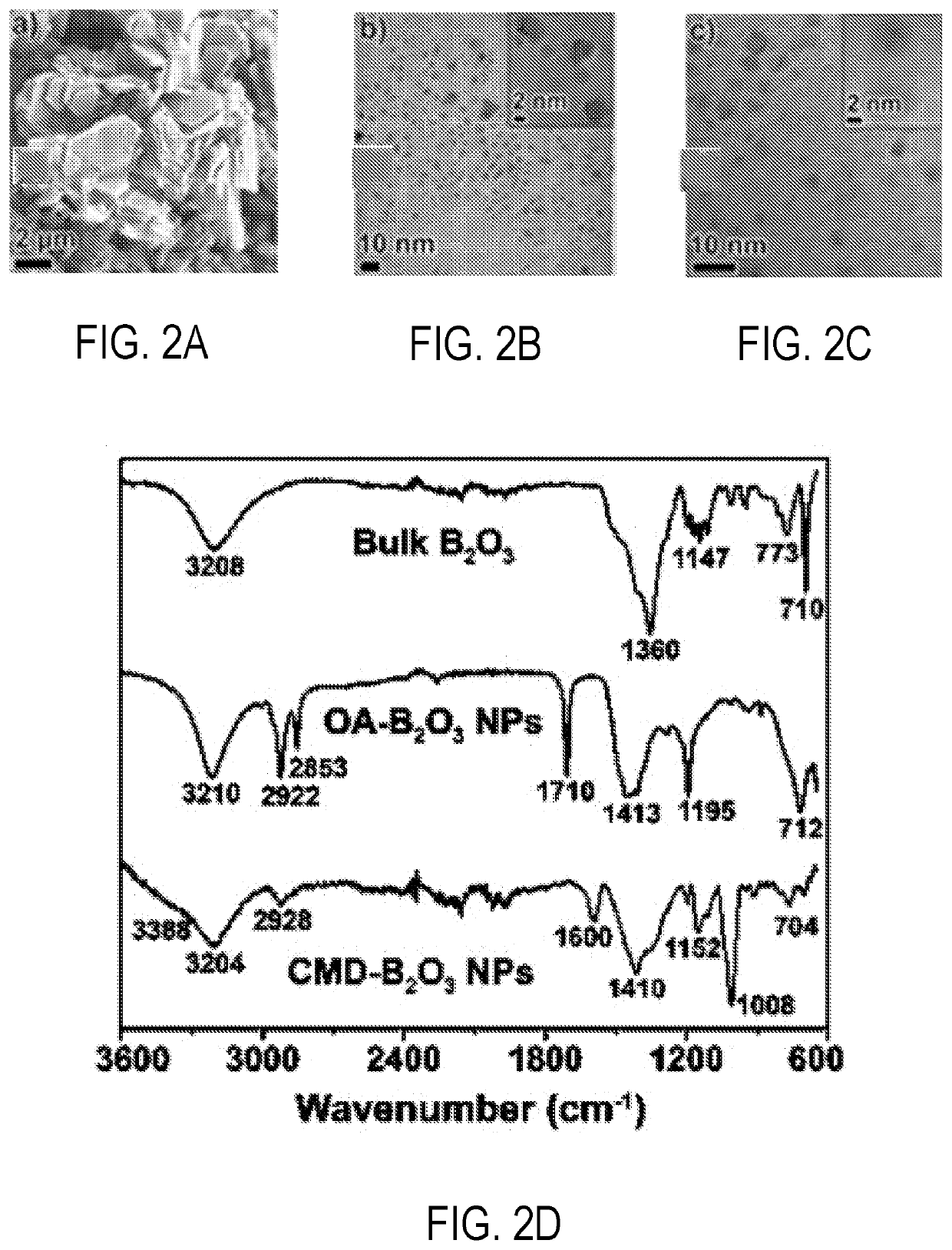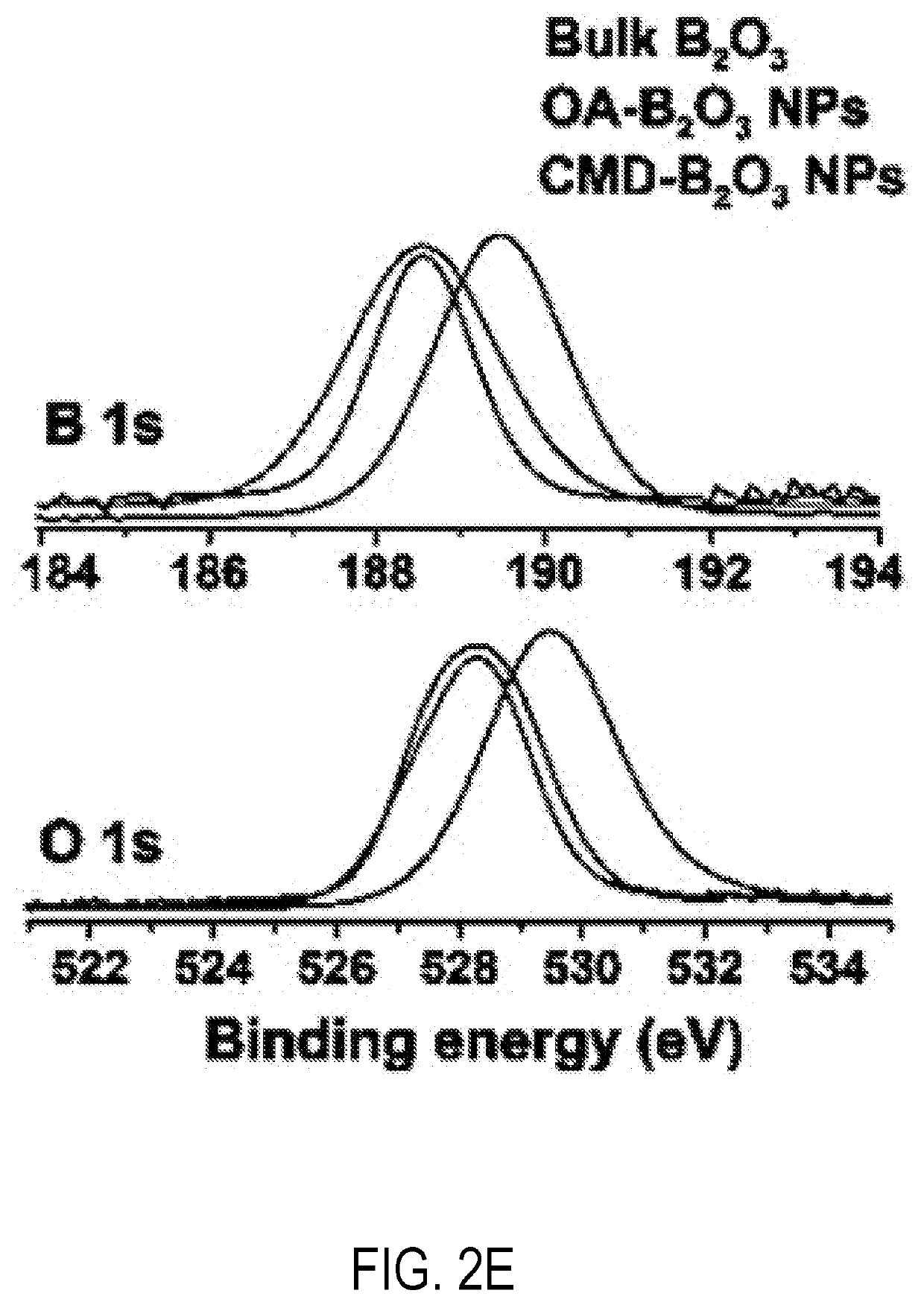System and Method for Making Boron Oxide Nanoparticles
- Summary
- Abstract
- Description
- Claims
- Application Information
AI Technical Summary
Benefits of technology
Problems solved by technology
Method used
Image
Examples
example 1
[0050]An experiment was conducted to validate the sonochemical methods discussed herein. Among other results, the multifaceted experiment allowed for the preparation of uniform, ultra-small (4-5 nm) B2O3 nanoparticles utilizing bulk B2O3 powder as the starting material.
[0051]The study was commenced by performing a sonochemical treatment on bulk B2O3 powder (FIG. 2A) in the presence of oleic acid, serving a dual role as the reaction medium and capping agent. Oleic acid was chosen due to its biocompatibility, high boiling point, and widespread use in stabilizing nanoparticles. Without being bound by theory, it is thought that the B2O3 nanoparticles formed from this treatment got rapidly capped with oleic acid which limited the reaction domain and prevented nanoparticle aggregation, similar to the surface modification observed in metal oxide nanoparticles. The composition, morphology and surface modification of the oleic acid-capped B2O3 nanoparticles (OA-B2O3 NPs) were characterized b...
example 2
[0059]In order to study the possible use of the method for making boron-rich compounds suitable for boron neutron capture therapy, we synthesized bulk isotopically labelled 10B2O3 (FIG. 14) with the aim of extending the above discussed nanostructuring methodologies to the bulk 10B2O3 powder. We successfully obtained products consisting of ultra-small, spherical shaped, OA-10B2O3 NPs (FIG. 4A), and CMD-10B2O3 NPs (FIG. 4B) having an average particle diameter of 4.9±0.9 nm (FIG. 16). SAED on the OA-10B2O3 NPs (FIG. 4A) showed polycrystalline rings that were indexed to a mixture of B2O3 polymorphs. The FTIR and XPS spectra for the OA-capped and CMD-capped 10B2O3 NPs (FIGS. 17 and 18) were in agreement with the observations for the corresponding B2O3 nanoparticles (FIGS. 2D-E) and substantiated the respective surface functionalization.
[0060]This straightforward two-step synthesis of biocompatible 10B2O3 NPs is especially useful when compared with the multi-step routes currently applied ...
PUM
 Login to View More
Login to View More Abstract
Description
Claims
Application Information
 Login to View More
Login to View More - R&D
- Intellectual Property
- Life Sciences
- Materials
- Tech Scout
- Unparalleled Data Quality
- Higher Quality Content
- 60% Fewer Hallucinations
Browse by: Latest US Patents, China's latest patents, Technical Efficacy Thesaurus, Application Domain, Technology Topic, Popular Technical Reports.
© 2025 PatSnap. All rights reserved.Legal|Privacy policy|Modern Slavery Act Transparency Statement|Sitemap|About US| Contact US: help@patsnap.com



